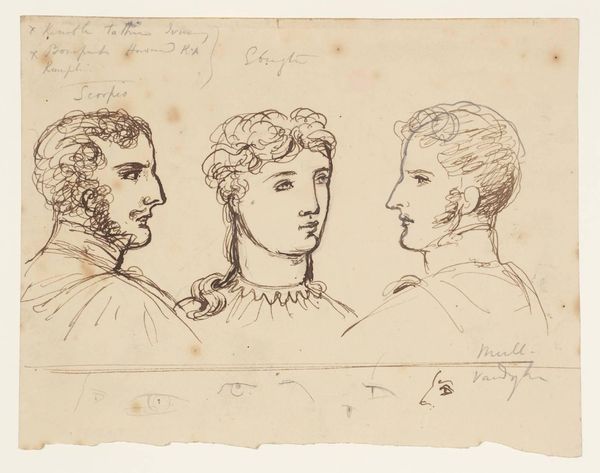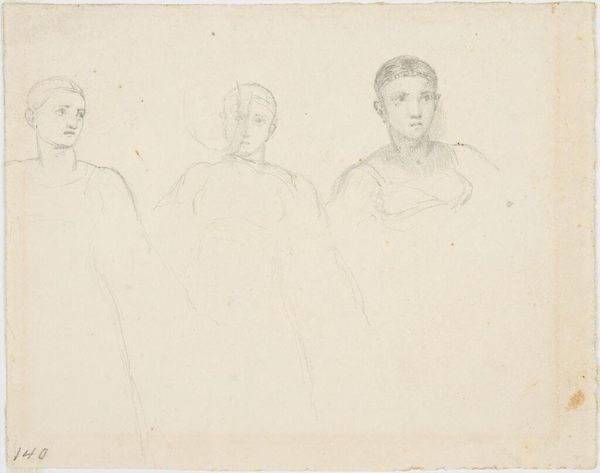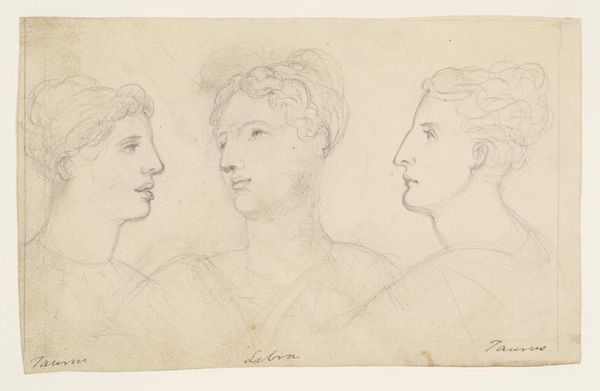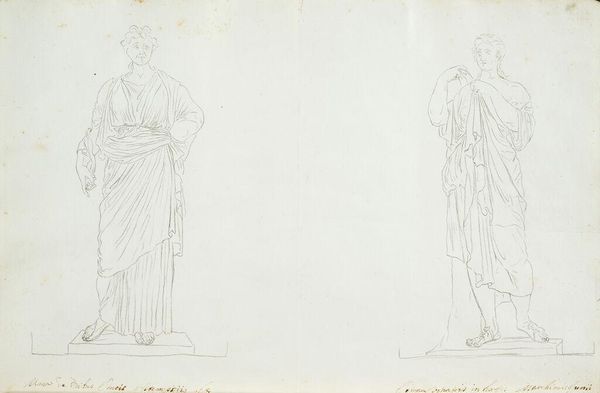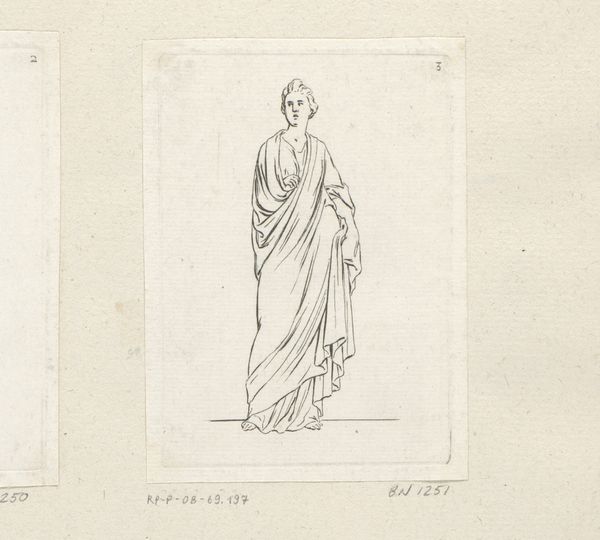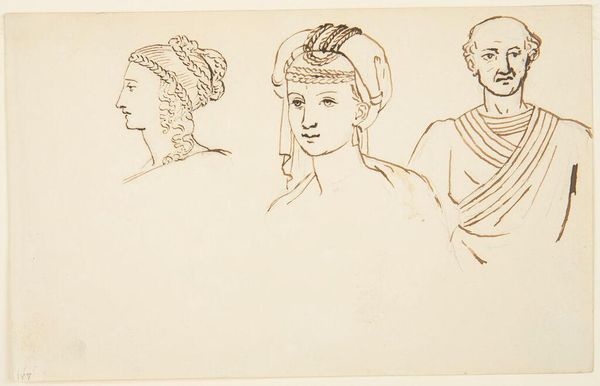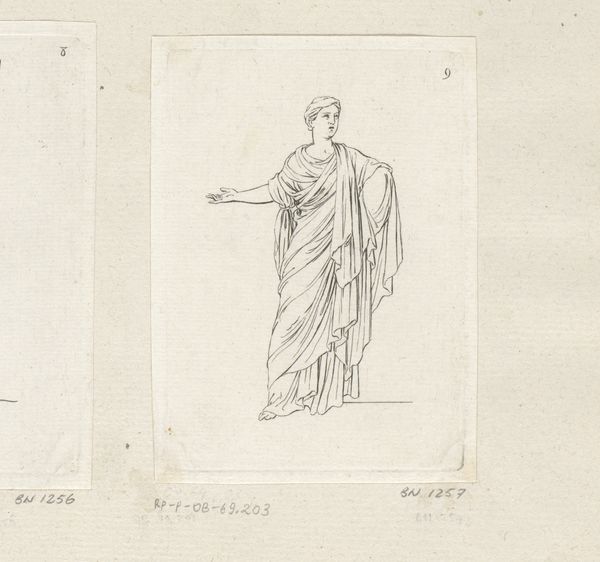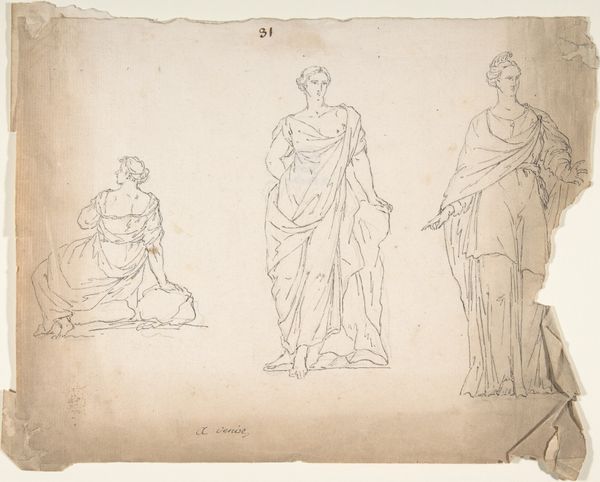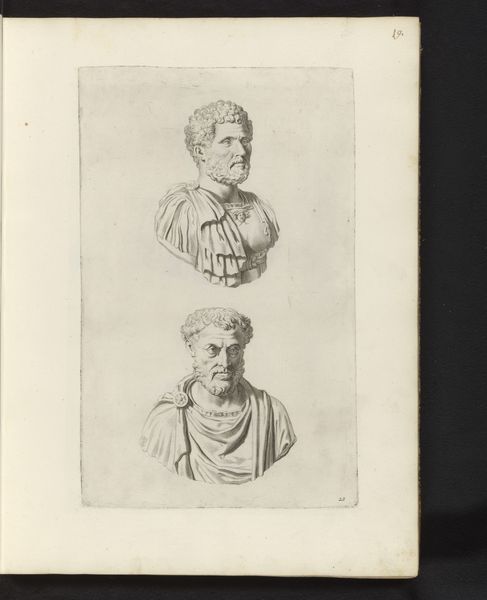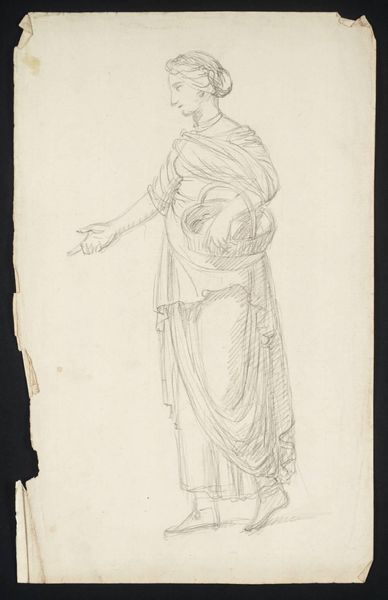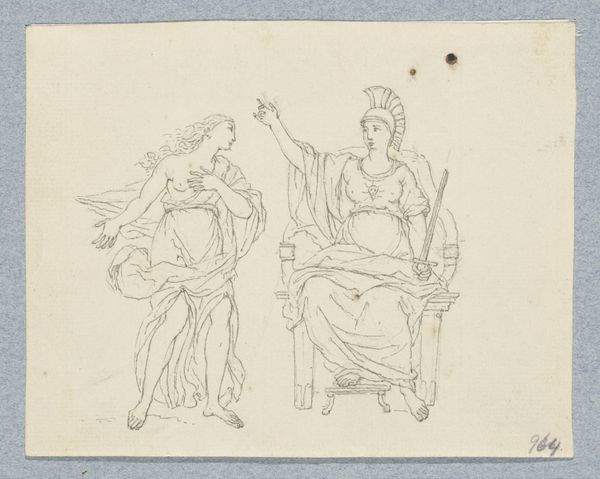
drawing, print, pencil
#
portrait
#
pencil drawn
#
drawing
# print
#
classical-realism
#
figuration
#
ancient-mediterranean
#
pencil
#
men
#
academic-art
Dimensions: 8 1/2 x 9 7/8in. (21.6 x 25.1cm)
Copyright: Public Domain
Curator: What a curious drawing, possessing a stark quality despite its classical subject matter. It looks like Vincenzo Camuccini's "Two Roman Busts," dating from 1771 to 1844, and rendered in pencil. The work on paper resides here at the Met. Editor: My initial sense is one of ghostly presence. These aren't robust portraits brimming with life; instead, they feel like echoes. The spareness of the pencil on paper reinforces that. It almost looks like he's trying to capture a fading memory, and quickly, perhaps, before the model changes or gets bored? Curator: Interesting observation! Given Camuccini’s interest in neoclassicism, the "fading memory" could be very literal. These busts were copied after ancient Roman sculptures, which were themselves fragments of a once vibrant, powerful empire. The artist uses ancient icons to engage the power of Roman symbols. Look at the bust on the right: See the Aegis of Athena adorning the armor? This is not simple portraiture but an effort to infuse the sitter with legendary qualities. Editor: You make a great point about the visual shorthand Camuccini employs, yet the thin lines also hint at his working method. A drawing like this wouldn’t be a finished piece necessarily, but instead a study. If so, it provides access to Camuccini's own studio processes. Where did he find his paper? How expensive were pencils in this period? How might we imagine him, working, reworking a figure that stands for more than meets the eye? Curator: It's that layered symbolism—a study *of* sculptures of rulers *by* an artist consciously aligning himself with a classical ideal—that fascinates me. Camuccini positions himself in a lineage. This pencil study almost serves as an act of artistic validation. Editor: Right! But it's the physicality, the immediacy of pencil on paper, that pulls me in. Seeing the sketch underlines the degree to which 'classical' wasn't just *found* but had to be materially *produced*, stroke by stroke. I keep wondering how a material reading might shift our interpretation of history and Neoclassicism. Curator: Considering his drawing practices through a material lens allows us to explore these works beyond their conventional reading as exercises in artistic replication and invites further speculation. Editor: It's an unusual drawing: somehow grand and modest at once.
Comments
No comments
Be the first to comment and join the conversation on the ultimate creative platform.
